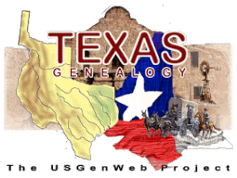RELIGION
CHURCH HISTORIES
First Baptist Church of Tyler
From the organization of this church in April, 1848, it was an active progressive body. The membership in 1852 had grown from the six constituent members to sixty-eight. For about two years the church continued to worship in the County Courthouse. Afterwards services were held for a time in the Odd Fellows' Hall; then the United States Court room was used. At this time Tyler was a place of great promise in the anticipated development of the country. The United States Court had been located there, and the Government had built a good Courthouse. Many prominent men were locating in Tyler, and it was a center of political influence. The church was anxious to make it also a center of education and Baptist influence.
In connection with the Cherokee Association the church inaugurated a movement to establish at Tyler, a Baptist school. For this purpose a house was built in 1855, which was to be used both for the church and for the school, on a lot owned by the Cherokee Association. The church and the Association worked in concord, and there were high hopes for the school. These prospects were all blighted, however, and the church was greatly embarrassed by a fire in 1856, consuming the building, which was without any insurance. Preparations were soon commenced, however, to build another house. The new house was built on the old lot, which still belonged to Cherokee Association. It was completed and occupied in 1859, but it was not until 1881 that the property was transferred to the church. Elder J. S. Bledsoe was pastor when this house was built, and continued in this capacity until the beginning of the war. During the war D. B. Morrell, J. R. Clark and N. P. Moore occupied the pulpit in the order as they are named. Elder John H. Roland succeeded Moore in 1868, and continued until 1872. Elder J. H. Stribling became pastor in 1873, and with the beginning of his services the church began to have services every Sabbath, and regular prayer-meeting during the week. In 1881 Rev. Reddin Andrews succeeded Brother Stribling.
In 1882 the church suffered another great misfortune. Again the church building was destroyed by fire. Services were now held for some time in the Opera House. It was not until 1884 that the building of a new house was agreed upon. There were various and conflicting views as to the kind of a house to be builded [sic]. The proposition prevailed that the house should be the very best. It was completed in 1889, and was dedicated on the 29th day of September. The building cost $25,000, and is one of the most beautiful and convenient houses of worship in the State.
In 1888 the Ladies Aid Society purchased a comfortable house for a pastor's home at a cost of $3,000. Mr. Andrews resigned in 1885 to accept the Presidency of Baylor University. Dr. A. J. Fawcett became pastor in 1888, and every department of church work was now prosperous. In 1891 the membership of the church had increased to four hundred and seventy-five, and the Sunday-school numbered two hundred and fifty. The prayer-meetings of the church continued to grow in interest, and the attendance was unusually good. A mission, known as the North Side Mission, had been fostered for several years, and the organization of a new church was the result.
During the pastorate of Dr. Stribling, in 1873, Deacon W. E. Penn held his first great revival meeting with Tyler church. At this meeting, lasting for many weeks, there were fifty-four additions by baptism and twenty-two by letter. Rev. G. G. Baggerly, the third pastor of the church, began his pastorate in 1853, and supported the educational enterprise with great energy and devotion; and up to the fire in 1856, which consumed the building, the prospect for the Tyler school was flattering.
Passing over a few years we find in 1899 Tyler church still active in all missionary work. During the associational year the church had made the following contributions: For home missions, $162.50; State missions, $340; foreign missions, $185; Orphans' Home, $131.35; associational missions, $100; aggregating $918.85; besides pastor's salary and church incidental expenses. This exhibit is very creditable for a total membership of four hundred and forty, as now reported. Although the membership does not appear as large as it was in 1891, still this does not necessarily any real declension on the part of the church. A great many had been dismissed to aid in the formation of new churches. Rev. J. H. Gambrell, the present efficient pastor, has served the church a number of years, in harmony and with great usefulness. C. F. Mansfield is the present church clerk.
Source: Transcription from the book, History of Texas Baptists, by B. F. Fuller, published in 1900; located on the website, Internet Archive (http://archive.org), accessed 10 January 2025.

